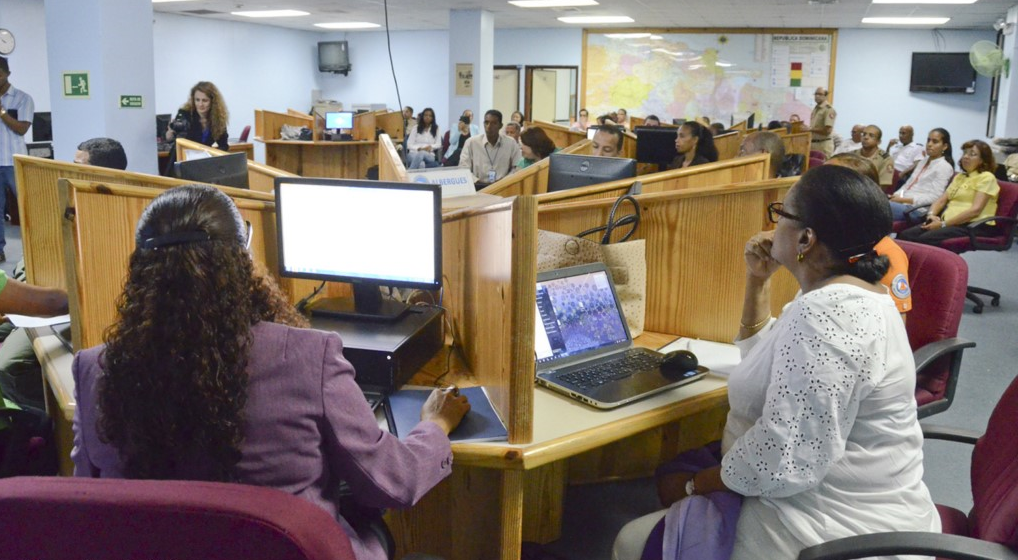In the framework of response and recovery, there is a large difference between the terms emergency and disaster. An emergency is an event that can be responded to using the resources available at hand, implying that there is no need to request external assistance. A disaster, on the other hand, is characterized by impacts that overwhelm the capacities of local responders and place demands on resources which are not available locally. Hence, an event is declared as a “disaster” when there is a need for external assistance to cope with its impacts. A national government declares a state of disaster or national calamity as a way to request international humanitarian assistance and the support of the international community to cope with the impacts of the disaster.
Three phases: Response, Rehabilitation, Recovery
When an emergency or a disaster affect a city or a region, efforts are conducted initially to care for the wounded, to restore lifelines and basic services, and subsequently to restore livelihoods and to reconstruct communities. Such efforts can be structured in three phases:
-
The Response phase, where activities such as search & rescue, rapid damage and needs assessments, and the provision of first aid are conducted; followed by the opening and management of temporary shelters for those left homeless as well as the provision of humanitarian assistance to those affected;
-
The Rehabilitation phase where basic services and lifelines are restored, even on a temporary basis, including the road network and other essential facilities including bridges, airports, ports and helicopter landing sites;
-
The Recovery phase where reconstruction efforts are carried out on the basis of a more precise assessment of damage and destruction of infrastructure. In addition, efforts are conducted to reconstruct infrastructure when needed and to restore the livelihoods of those affected.
National Set-Ups
Several decades ago governments in many countries of the world enacted legislation establishing policies as a way to ensure that response and recovery efforts are conducted in a timely and efficient fashion in case of a disaster. In most cases such legislation incorporated the establishment of a National Emergency Commission or Management Agency (NEC, NEMA or similar); an Emergency Operations Centre (EOC), and a hierarchical structure from the national to the local level as a way to coordinate response and rehabilitation efforts in all areas affected by the emergency or the disaster.

Emergency Operations Centres
The EOC is the official structure that brings together decision-makers from many ministries and government agencies as well as representatives of the private sector in some cases. It is set up to facilitate the coordination of response efforts in all regions affected by the disaster. Through an efficient compilation and analysis of damages and needs, institutions inside the EOC can effectively identify how best to cooperate as a way to deliver humanitarian assistance and other resources to communities affected by the disaster, and to carry out additional response and rehabilitation processes.
Information Management
Precise and up-to-date information on damages and needs is of the essence as a way to plan and conduct response and rehabilitation efforts in areas affected by disasters. The use of maps is equally useful as a way to enhance situational awareness regarding the extent to the event and the areas affected, as well as other relevant data including the geographic location of lifelines damaged or destroyed and roads which can still be used to deliver humanitarian assistance. In recent years, EOCs have begun using Geographic Information Systems as tools to generate maps and web-based mapping services such as Google Earth, to visualize additional geospatial data.
Read more on Information Management
The Role of the United Nations
Recognizing the need to contribute to disaster response and recovery efforts, all response efforts on behalf of the United Nations are coordinated by the Office for the Coordination of Humanitarian Affairs (OCHA). At the request of the government affected by a disaster, OCHA may dispatch a United Nations Disaster Assessment and Coordination team (UNDAC) to the country to provide technical services, principally in on-site coordination and information dissemination. In addition, OCHA may decide to activate its structure of clusters to deliver humanitarian assistance in a coordinated fashion.
